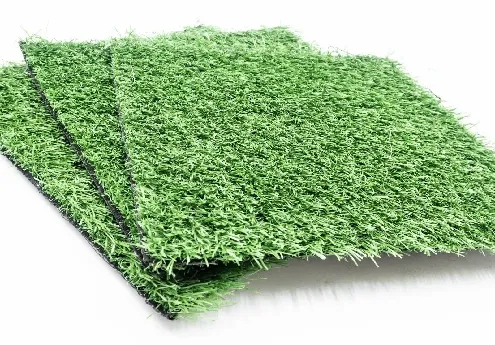
- Afrikaans
- Arabic
- Belarusian
- Bengali
- Czech
- Danish
- Dutch
- English
- Esperanto
- Estonian
- Finnish
- French
- German
- Greek
- Hindi
- Hungarian
- Icelandic
- Indonesian
- irish
- Italian
- Japanese
- kazakh
- Rwandese
- Korean
- Kyrgyz
- Lao
- Latin
- Latvian
- Malay
- Mongolian
- Myanmar
- Norwegian
- Persian
- Polish
- Portuguese
- Romanian
- Russian
- Serbian
- Spanish
- Swedish
- Tagalog
- Tajik
- Thai
- Turkish
- Turkmen
- Ukrainian
- Urdu
- Uighur
- Uzbek
- Vietnamese
Benefits of Using Synthetic Grass for Athletic Fields and Sports Activities
Nov . 28, 2024 03:20 Back to list
The Advantages of Synthetic Grass for Sports Fields
In recent years, the popularity of synthetic grass for sports fields has increased significantly. This artificial turf provides various benefits, making it an attractive option for schools, sports clubs, and recreational facilities. As athletes' needs evolve and the demands for high-quality playing surfaces grow, synthetic grass emerges as a reliable solution catering to these requirements.
Durability and Longevity
One of the standout advantages of synthetic grass is its durability. Unlike natural grass, which can be easily damaged by heavy foot traffic, weather conditions, or pest infestations, synthetic turf maintains its integrity throughout the season. This resilience means that teams can play on a consistently high-quality surface without the worry of wear and tear. Typically, synthetic grass can last anywhere from 10 to 15 years, significantly reducing the need for frequent replacements that come with natural grass fields.
Reduced Maintenance Requirements
Maintaining a natural grass field can be a labor-intensive and costly endeavor. Regular mowing, watering, aeration, fertilization, and pest control are all necessary to keep natural grass in optimal condition. In contrast, synthetic grass requires minimal upkeep. While some maintenance is necessary, such as brushing the fibers and removing debris, the workload is far less compared to caring for a natural surface. This reduction in maintenance efforts not only saves time but also lowers the associated costs, which is often a significant consideration for athletic organizations operating on tight budgets.
Consistent Playing Conditions
Synthetic grass provides a consistent playing surface that is not subject to the unpredictability of climate conditions. Natural grass fields can become muddy and slippery after rain, or hard and dry in hot weather, leading to variations in gameplay and increased risk of injury. Synthetic surfaces are designed to drain water efficiently, allowing play to continue shortly after rainstorms and ensuring that the field remains consistent, regardless of weather conditions. This reliability is particularly crucial for competitive sports, where athletes need to perform at their best without the hindrance of variable playing conditions.
synthetic grass for sports field

Enhanced Safety
Safety is a paramount concern in sports, and synthetic grass offers several advantages in this area. Most synthetic turf systems are designed with shock-absorbent backing and infill materials that help to reduce the risk of injuries, such as sprains and concussions. This reduced risk of injury is especially important for high-contact sports like football and rugby. Furthermore, the even surface of synthetic grass minimizes the chance of uneven footing, contributing to safer gameplay for athletes.
Eco-Friendly Options
While some may argue that synthetic grass is less environmentally friendly than natural grass, advancements in technology have led to more sustainable options for artificial turf. Many new synthetic grass products are made from recycled materials and are fully recyclable at the end of their lifespan. Additionally, synthetic fields eliminate the need for pesticides, fertilizers, and extensive water usage typical in maintaining natural grass. This allows sports facilities to significantly reduce their environmental impact, conserving precious resources and promoting sustainability.
Increased Usage and Accessibility
The durability and low maintenance of synthetic grass fields allow for much higher usage rates compared to natural grass. In many cases, a single synthetic field can accommodate multiple sports, from soccer to football, and can be used for practices, games, and community events almost year-round. This increased accessibility ensures that more athletes have opportunities to train and compete, promoting a healthy, active lifestyle within the community.
Conclusion
Synthetic grass for sports fields offers numerous advantages that make it a compelling choice for many organizations. Its durability and low maintenance requirements provide significant cost savings, while its ability to maintain consistent playing conditions enhances athlete safety and performance. With advancements in eco-friendly materials and technologies, synthetic grass presents a viable and sustainable option for sports fields, catering to the evolving needs of modern athletics. As the demand for high-quality sports surfaces continues to grow, synthetic grass stands out as a reliable alternative that can meet the rigorous standards expected in the athletic community.
-
The Benefits of Artificial Turf for Indoors
NewsJul.15,2025
-
How Artificial Grass Suppliers Ensure Quality Products
NewsJul.15,2025
-
Artificial Grass and Pets: A Space for Relaxation
NewsJul.08,2025
-
Balcony & Outdoor Decoration with Artificial Grass
NewsJul.08,2025
-
Best Indoor Artificial Grass for Home
NewsJul.07,2025
-
Best Pet Turf for Dogs: Safe & Durable Artificial Grass Options
NewsJul.07,2025
Products categories









